Obviously pregnant, but a fighting lady! Supermarine Attacker FB.2
There are aircraft that, once seen, are remembered. This does not require the expert eye of an aeronautical engineer, nor is it due to the fame of a long or spectacular operational history, nor is it due to a particularly aesthetically pleasing appearance. Rather, the secret lies in another, peculiar quality: these aircraft seem "wrong" in a strange, almost eccentric way!
In the following mental tour, I would like to briefly demonstrate why I think this statement applies to the Supermarine Attacker.
About the Supermarine Attacker F.B.2
The first irritation comes when you see this machine on its landing gear. On the one hand, you can clearly recognise a jet, but on the other hand, the Attacker is strangely designed as a tailwheel aircraft. This configuration, by the way, has always caused problems during its use: neither grass runways nor the concrete or asphalt of paved surfaces, not to mention the material of aircraft carrier decks, particularly appreciate being maltreated by an exhaust jet several hundred degrees hot. Although the last part of the exhaust pipe of the series-production aircraft was slightly raised, this did not provide an effective solution. To the best of my knowledge, the Supermarine Attacker remained the only jet with a tailwheel built in series production.
In view of the above, the question arises why Supermarine chose this layout, especially since the nose wheel landing gear would not have been untested territory. An answer to this question can be found in the development history of the type. As a "first generation" jet, the Attacker was seen from the beginning as a quickly available interim solution with which one wanted to gain initial experience with carrier-based turbine aircraft.
The project itself stemmed from a 1944 British Air Ministry call for proposals for a single turbine-powered fighter with laminar airfoils. Supermarine cut corners and fitted the laminar wings of a Spiteful with a new fuselage whose built form could accommodate a Rolls Royce Nene radial turbine. The Spiteful's landing gear was also carried over almost unchanged, which in turn explains the tailwheel and thus the Attacker's uniquely eccentric appearance.
Supermarine's test pilot legend Jeffrey Quill led the first of three prototypes of the internally named "Type 392" project to its maiden flight on 27 July 1946. The further development steps brought some changes to the airframe, but proved the basic potential of the design. An extension of the rudder in the form of a dorsal fin improved stability and cured the dangerous tendency for the rudder to lose its effectiveness in the long run at a certain angle of bank. The wingspan was also increased on the production aircraft.
The awakened interest of the Fleet Air Arm soon resulted in the testing of an Attacker in Navy configuration. The aircraft, equipped with arresting hooks and reinforced landing gear, took to the air for the first time in June 1947. In November 1949, the FAA placed a production order with Supermarine, and by May 1950, the first production Attacker F.1 was flying. Delivery to the Naval Air Squadrons began a year later. In addition to the three prototypes, a total of 182 Supermarine Attackers were to be built.
Now for irritation number two! Already during flight testing, an element was added to the Attacker that also contributed to its eccentric appearance and the resulting distinctiveness. The thirsty engines of those early jet days made carrying external fuel tanks unavoidable. This was particularly true of carrier aircraft. Supermarine found a rather handy remedy for the Attacker - just as for its land-based stablemate Supermarine Swift - instead of jettisonable tanks: a large external tank with a capacity of around 1,100 litres of fuel was fitted under the fuselage, which was retained in later flight operations. Although aerodynamically shaped, this "dachshund belly" gave the originally slender and ornamental design a distinctly belly-flattened cosiness.
However, this impression was deceptive, because the Attacker was not meant to be comfortable! The performance was quite respectable in a contemporary comparison. With a top speed of 970Km/h, the Attacker scratched the sound barrier, and the service ceiling of 13,700 metres and a climb rate of 32.3 m/s put it in the upper league. Empty, the Attacker weighed 3862 kg, fully loaded it weighed 5,339 kg.
The armament reflected the standard equipment of the RAF and FAA at that time - especially when you think of propeller aircraft. Four 20mm Hispano Mk.V machine guns were mounted in the wings, and the later FB.2 could also carry two 450 kilo bombs or an equivalent number of eight diverted rockets at outstations.
During its few active years with the FAA, the Attacker saw no sharp action; although it was flown with three Naval Air Squadrons, 800, 803 and 890. From 1954 it was withdrawn from these front line units and was now only seen in training and in the Royal Naval Volunteer Reserve. In 1957, the RNVR retired its last attackers.
In Pakistan, however, where thirty-six machines of the "de-navalised" Mk.538 version had been delivered since 1953, the Attacker still smelled gun smoke. In the fiercely fought fratricidal wars between the two young states of India and Pakistan, the Attacker gained an excellent reputation among its pilots as a fighter and fighter-bomber and was to remain in Pakistan's arsenal for some time to come.
Kit and building process
With good reason one is often divided about Trumpeter, but one thing has to be conceded to the developers from the Far East: they have the courage to choose an unusual model! I was very pleased when I was able to purchase this rare jet as a mainstream kit. However, it quickly became apparent where to find the proverbial shadow that would dampen this joy.
Unfortunately, the kit moulds do not only show wonderfully fine surface structures, but also decided mould errors. One thing in particular needs to be corrected: The tailplane sits much too low on the fuselage! I did adjust its position upwards with a small surgical intervention, but it was mainly the rear part of the tailplane that was raised. In fact, I had not liked the strange angle of attack, which I wanted to correct in this way. Unfortunately, the result was that when painting the fuselage, the borderline between the upper and lower colour remained too low down - and therefore the numerical code of the marking protruded into the upper half of the colour. But this contradicts the original appearance, where the upper edge of the numerical code lies exactly at or below this borderline. I had no other choice but to repaint and to use a little trick to bring the borderline upwards. After that I could put the markings in the correct position with a new set of decals.
Further correction is needed for the unsuccessful V-position of the wings. Trumpeter prepares a completely flat alignment of the wings here, which not only looks very strange, but is also definitely wrong. Here the repair was easier: over a heat source the plastic would be made pliable and then bent into a suitable shape- a process that should not be overdone though! With a little adjusting and sanding, the proper alignment is then easily accomplished.
Another shortcoming of the kit is the lack of detail. I'm not only thinking of classically undersupplied areas such as cockpit and landing gear - where I helped myself out with etched parts from my collection - but above all of the omissions of details that clearly determine the appearance of a Supermarine Attacker. For example, the antennas that can be seen in the lower nose area are not only not included in the kit, but are not even shown or mentioned. The often-heard good advice to do a thorough research on the prototype is indeed recommended here.
To end so many complaints with something positive: once you have mastered these pitfalls, the rest of the construction proves to be a pleasure. Especially the fine surface structures are really pleasing.
Despite all the points mentioned, I would still like to recommend this kit unequivocally. Not only so that Trumpeter is rewarded for the courage to build such exotics, but also because with a little extra effort and improvisational joy a really worth seeing piece of aircraft history can be brought to life. Because, as stated at the beginning, once you have taken a closer look at an aircraft like the Supermarine Attacker, you will never forget it!
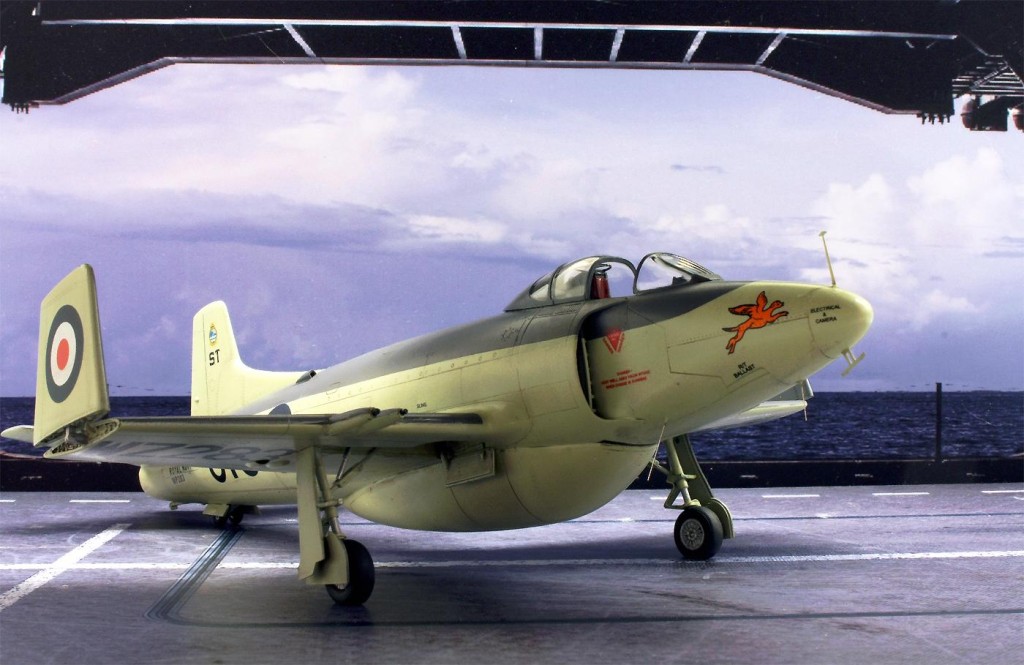
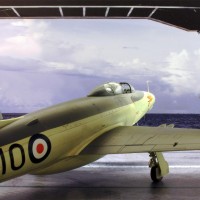
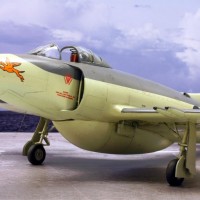
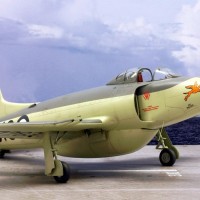
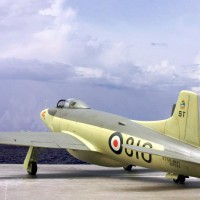
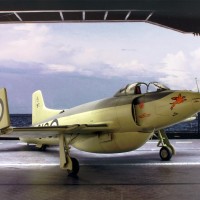
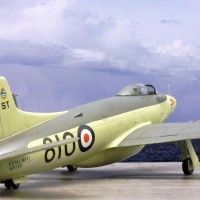
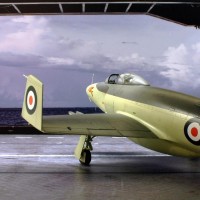
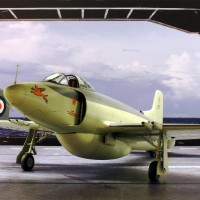
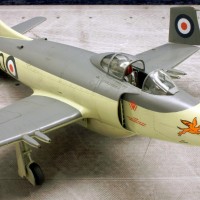
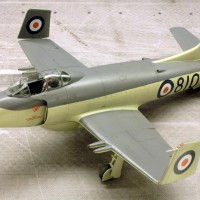
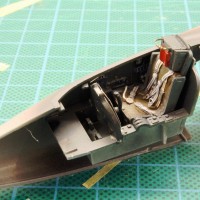
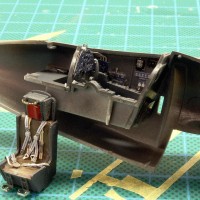
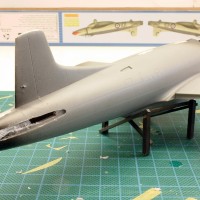
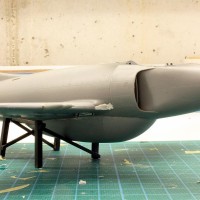

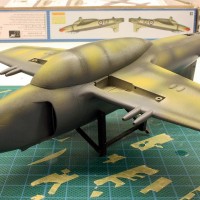

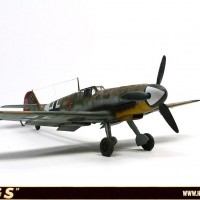
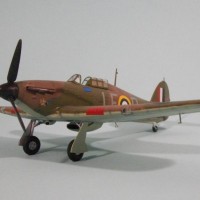
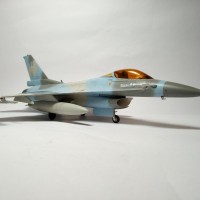

You did an excellent job on this out of the ordinary aircraft, Roland @rosachsenhofer
Interior as well as the exterior looks amazing, very nice paintwork.
Your supporting article is a nice addition as well.
I'm glad to hear your words!
Dear Roland, the composition of the photos is ingenious. You have indeed taken the best of this Trumpeter kit! I heard of this airplane but did not store it with details in my memory so thank you for the elaborate introduction to the theme. All efforts well taken. KR G.M.
That is very gratifying, thank you for your valued feedback Georg!
Yet another amazing result and an amazing article, Roland!
Thanks for all the info supplied regarding kit's issues and remedial actions!
My friend, motivating words, thank you!
Nice model from a "dog's breakfast" of a kit - a tribute to your talent, skill and stubborn persistence. If you can find it at a decent price, the Classic Airframes kit is vastly superior. The Falcon vacuform is even better.
Thank you Tom! Indeed, a second "Attacker" would tempt me at any time; then one of the formidable Pakistani machines would be on the programme - and I think in the AM pack even the markings and modifications for this build would be found.
You are obviously a Fleet Air Arm specialist, Roland, another great post from you, thoroughly enjoyed.
Thank you George! Certainly not a great specialist, but someone who has succumbed to the very special charm of British naval aviation!
Nicely done, Roland! Like the photos with backdrop
Gray, thank you for these words!
Fantastic build! An unusual subject done extremely well!
Greg, I'm glad you like the prototype and the model. Thank you!
Cool model of an oddball. The Soviet YaK-15 has a similar back story. Basically a redesigned piston powered tail dragger airframe modified for a turbine power plant.
Jim, thank you very much!
An informative and welcome rebuttal to my bold assertion that the Attacker was the only production-built jet with a tailwheel! 🙂
Your usual result (spectacular) on a most unusual kit! Great build and pictures! Thanks for sharing
I appreciate your valued words, thank you!
Outstanding result. The first image could fool one as being taken from a real aircraft in a museum.
Well, that makes me proud and motivated!